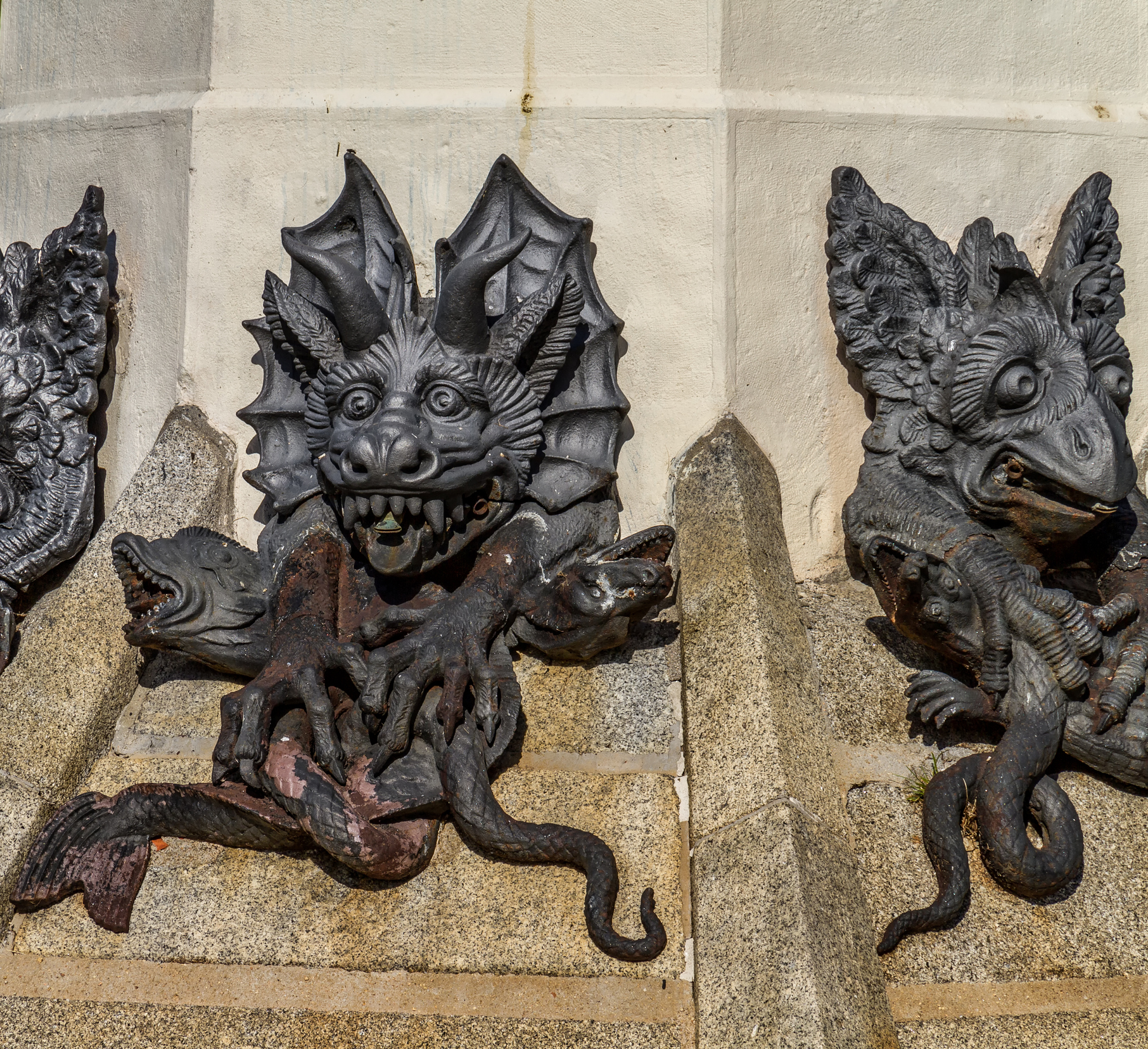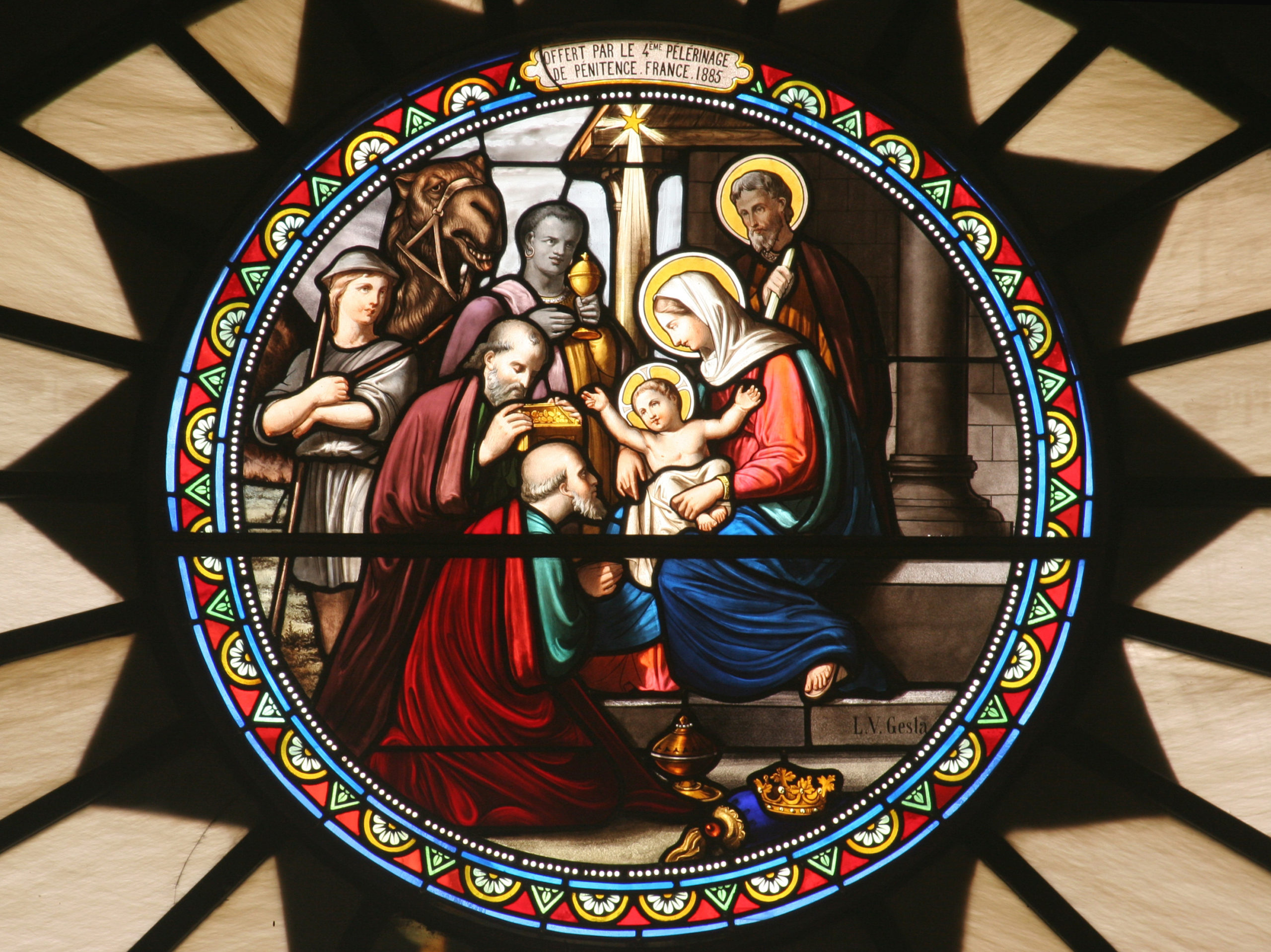Charting a course between dualism and materialism.
There Is No Raw Material

Transhumanism is man's latest destructive attempt to obtain the unobtainable.
The earth was once without form and void. Could it be made that way again?
That was the question of the alchemists, who hoped that one day their occult arts would grant them eternal life. In Greek, the word chēmia means mixing and transforming metals, resolving them to their component parts and fusing them together in new forms. Trapped in certain patches of dirt and rock there are precious materials like gold. When subjected to the right conditions, a confused jumble of naturally occurring matter can be separated out into its elementary parts. And if the stuff of the world can be melted down or pulverized into ever-purer substances, then why shouldn’t all things be resolvable into one substance, the purest thing of all?
With the subtlest possible application of heat or pressure, this “prime matter” might come pouring out from the heart of things like molten copper from a smelting furnace. Though of course, copper could only be used to make a finite number of things. Prime matter, on the other hand, had been tangled and molded in uncountable ways to make every other substance at the dawn of time. It followed that whoever found out how to obtain the stuff in its raw form could turn anything into anything else. And so it is probably through Arabic that chēmia became al-kīmiyā, which entered the European languages as “alchemy.” This quest for prime matter and for the philosopher’s stone was the “great work” that would make all things interchangeable.
The same exhilarating ambition motivated the practitioners of another art as well. Drop the Arabic “al” from the Greek chēmia and you get “chemistry,” the study of physics at the molecular and atomic levels. Chemistry and alchemy spring from the same root, because they reflect the same impulse: to manipulate things at their simplest, when their potential is greatest. In the 17th century “alchymy” and “chymistry” were practically interchangeable words, and the giants of the scientific revolution often studied both. In 1687, the first edition of Newton’s Principia included the statement that “any body can be transformed into another, of whatever kind, and all the intermediate degrees of qualities can be induced in it” (Hypothesis III). Gottfried Leibniz, who raced alongside Newton toward the discovery of calculus, began his career in Nuremberg as secretary to an alchemical society. The men who discovered classical physics wanted to pare the world down to its simplest possible form.
They never abandoned this project: they just refined it. Pierre Gassendi, a French philosopher who helped prepare the way for our modern theory of atoms, wrote an Epistolary Exercise in which he urged a distinction between “false alchymy” and “true alchymy.” The false kind was unfortunately involved in all sorts of arcane speculation and discredited mysticism. The real alchemy, though, promised to reveal the “seeds” of material things. In 1638 Francis Bacon hoped he could give “magic” an “honorable meaning,” relieving the word of its fantastical connotations and associating it with “the science which applies the knowledge of hidden forms to the production of wonderful operation” (De Augmentis III.5). Elsewhere he wrote about an “appetite or instinct of primal matter; or to speak more plainly, the natural motion of the atom; which is indeed the original and unique force that constitutes and fashions all things out of matter” (De Sapientia Veterum). Modern scientists didn’t outgrow magic. They just hit upon a kind of magic that seemed to work.
All the Way Down
In many senses, of course, it did work. Arthur C. Clarke famously observed that “any sufficiently advanced technology is indistinguishable from magic.” That’s true enough, since really successful technology does what magic promised to do all along. It gives the wielder control over nature by harnessing the basic forces at play. That is what the study of physis, i.e., “natural science,” has been about since antiquity.
But in another sense, alchemy has never worked: it only ever seems to for a while. That fundamental search for prime matter, for something so simple it has no form or qualities and can take on any shape we choose to give it: that search has never led us down to the bedrock we crave. Even atoms are not “unsplittable,” it turns out, though splitting them involved violence on a nightmare scale. Now the colliders seem to burst with more elementary particles than the Nobel committee could possibly have time to recognize. And it is unclear whether these minute shards of existence always have the extension, the definite position in space, or even the individuation that one would hope for in anything meriting the name of “pure matter.” One begins to suspect there is no such thing.
Thomas Aquinas would not be surprised. He insisted that prima materia or prōtē hulē, the formless “stuff” of the philosopher’s dream, never actually existed. Matter without form was pure potential only—conceivable but never real. “Primary matter was not created altogether formless, nor under any one common form, but under distinct forms” (Summa I.66). Even atoms are not pure “stuff,” because nothing is pure “stuff”: whatever we experience in the world, we see it as having some form, some property, some characteristic. We will never boil things all the way down.
As I read the many illuminating responses to my “Body Crisis” excerpt from the new book How to Save the West, one thing struck me: we may be facing once again the impossibility of obtaining raw prime matter. Strange as it may seem, this rather high-order philosophical error is now having real and tangible consequences everywhere we look, from the sudden mania for “gender transition” to the sinister promises of tech transhumanists. And as these projects bring harm after harm upon the heads of the innocent, ancient truths are making themselves felt not as historical curiosities, but as desperately needed lifelines out of a world gone mad. My sense that this is true—that the old verities have become more urgent and not less—is why I wrote the book. I could not be more grateful to these authors for drawing out the ramifications of this situation and showing them to me in new ways I had not expected.
Daniel J. Mahoney writes that “technocratic utopians dream of leaving our humanity behind” in favor of a disembodied “angelism,” turning an elect few into digital ghosts or lines of code who can manipulate and reform our bodies at will. Helen Roy observes that this undertaking follows naturally from our misguided attempts to transcend our sexed nature as male and female, which has meant trying “to disintegrate the connection between body and soul.” Underlying all this is the unspoken promise that our bodies, like the rest of the world, can be melted down into endlessly moldable and malleable “stuff,” repurposed and exchanged when desired. As Grayson Quay points out, this promise is implicit even in the way we talk about ourselves, when we reduce the human body to “a thing, or rather a collection of things, all of which have specs and price tags.”
The Word Made Flesh
The net result is not freedom but mutilation. The reason why is simple: nothing in the world is just “stuff.” Everything, from the tiniest particle on up to the grandest galaxy, is made from a fusion of form and matter. The raw potential of matter always becomes actual in the human mind through the language of shape and color, nature and quality. If this is true of such comparatively worthless things as galaxies, how much more so of a human being, who matters more than a thousand thousand nebulae as they float blazing through lifeless space. Our humanity is not simply a pile or heap of flesh. We can never grind the meaning out of it or sluice away its significance. We are seeing now what sorts of horrors ensue when we try.
In the West today, an effort is being made to churn up all metal, all earth, and all flesh in the alchemical maw of prime matter. You can see it in the pictures of girls whose forearms have been hacked apart to create a simulacrum of the male genitalia, or whose healthy breasts have been cut away. Since matter never comes without form, no one can obtain anything like “raw material” without breaking down a previously existing form. When you try to do this to people you do not liberate them or bless them. You disintegrate them physically and psychically—it is hard to tell which is worse—until they can no longer see or feel themselves as whole. You do not have to perform any sort of mystic ritual to see what demons do: they do that.
Which is why the “acid bath of digital Prometheanism,” which Mary Harrington describes, looks so much like a vision of hell. It is. Harrington and Jennifer Bilek both expertly reveal the ruthless, grasping nature of bio-capitalism, in which flesh becomes like meat for sale. How could it not? Like a satanic perversion of both biology and capitalism, the twisted logic of this new fantasy makes a mockery of both and makes prey out of us. Prime matter, like prime rib, is something to be carved up and consumed: if that is not a satanic thought, I don’t know what is.
I could not possibly do justice to all of these responses, nor adequately express my gratitude for them. Nor could I say what it means to me that How to Save the West is finding its audience and making a few old truths known. For if Aquinas could have predicted one of the major errors of our modern scientism, then I have this hope: the wisdom of the ages, passed down through generations, gives us a way out of this mess. It is the old union of body and soul, the greatest fusion known to us in this spirit-shaped world, that will rescue us.
It’s interesting to me that so many people are realizing, in so many contexts, that “neutrality” is often fake: in schools, in government, in the public square. Well, if there’s no such thing as a formless and value-free “marketplace of ideas,” there’s certainly no such thing as a shapeless and unqualified “prime matter.” Creation is threaded through always and everywhere with form, with reason, with meaning. And nowhere in the vast expanse of space is that more profoundly so than right here and now on earth, where the Word of God is made flesh and humanity, that thing of dust, walks upright in his image.
The American Mind presents a range of perspectives. Views are writers’ own and do not necessarily represent those of The Claremont Institute.
The American Mind is a publication of the Claremont Institute, a non-profit 501(c)(3) organization, dedicated to restoring the principles of the American Founding to their rightful, preeminent authority in our national life. Interested in supporting our work? Gifts to the Claremont Institute are tax-deductible.
The gender industry is corporate grooming for transhumanism.
The conquest of the body has not been as equitable as advertised.
Digital Gnostics and the flight from embodied personhood.
Age dysphoria is the real dysphoria that's coming for us all.
The political solution to our gender neuroses is to reject the Left’s categories altogether.






